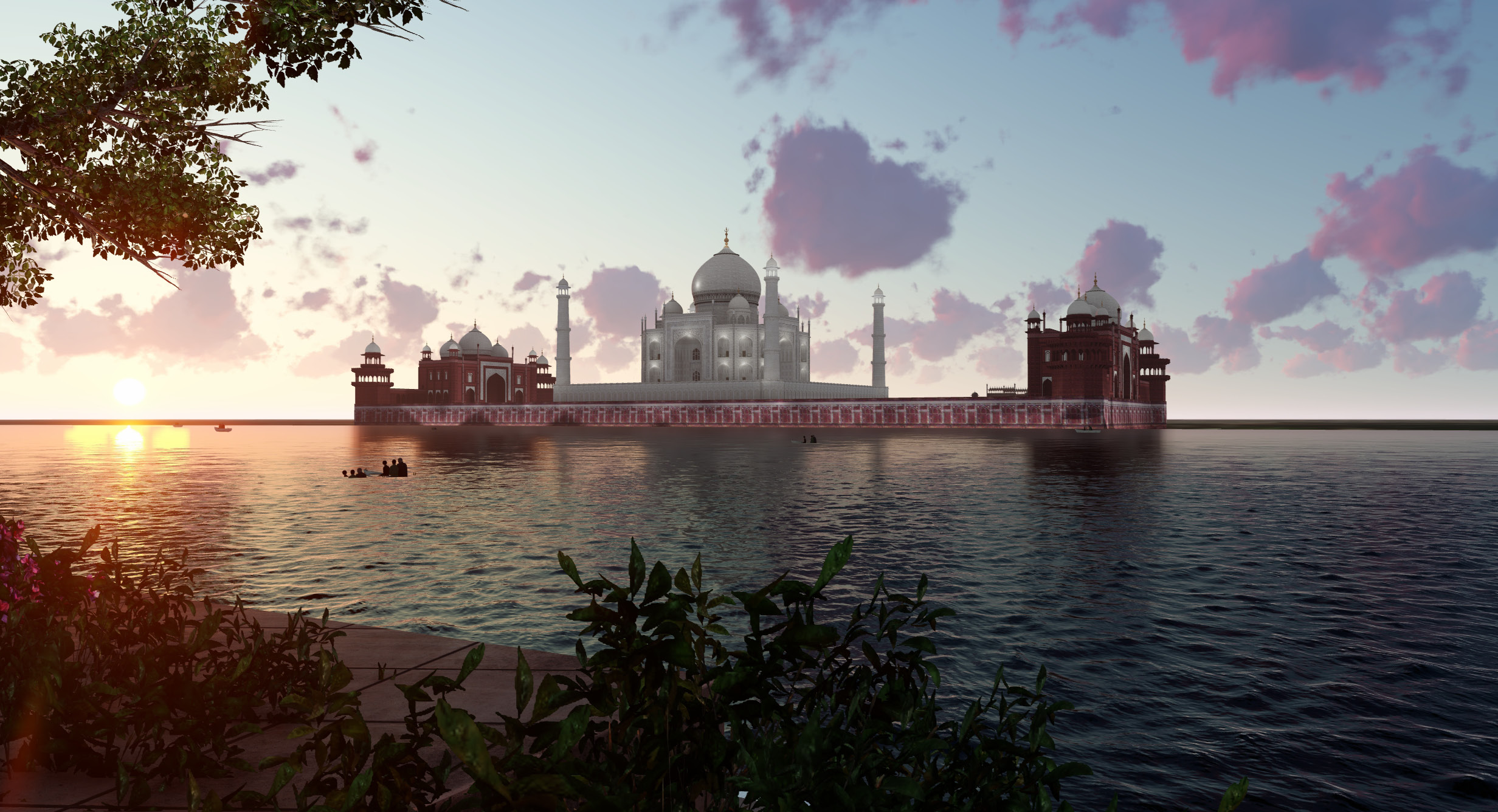
HKS Awarded Development of Four UNESCO World Heritage Sites to Help Preserve India’s Poetic Past
The pace of global tourism has accelerated over the last few decades and forecasts indicate continued growth, with Asia rising to become one of the most popular destinations. With tourism booming, India’s Ministry of Tourism, under the Swadesh Darshan scheme, launched an ambitious project: the re-envisioning and development of India’s iconic tourism locations. The government identified 17 UNESCO World Heritage Sites, and HKS New Delhi was selected as the lead development planner for four of them — Taj Mahal, Fatehpur Sikri, Qutub Minar and Red Fort.
The tourism ministry’s primary objective in redeveloping these sites is to increase tourism and enhance the visitor experience in and around each monument. It’s an incredible opportunity for HKS designers to directly engage with the community and the administration to shape the future we all believe in.
The absolute symmetry of the Taj Mahal mausoleum and minarets; the rhythmic lotus carvings on the Qutub Minar; the massive scale of Fatehpur Sikri; and the rich ornamentation in Red Fort have all served as our windows into India’s poetic and celebrated history. HKS embraced the onus of preparing a comprehensive Phase I development plan that celebrates the cultural legacy of the sites and their cities. Our intent focuses on curating an experience by sharing vivid tales and stories of each tourism site and its context in a way that builds a sense of pride and awe in the visitor. It is a chance for us to create a journey that connects the present and future generations with each monument’s glorious past.

Our design methodology involves a comprehensive understanding of the physical location, its social nature as well as the laws governing it, engaging and working closely with the client and the stakeholders while learning from similar projects. We synthesized all requirements of the development into a vision that embraces and celebrates the culture and people of the country. The research employed a mixed-method approach that embraced quantitative assessment for understanding the average tourist perspective, and qualitative assessment of the current operations at and around all the sites. This included demographic and demand assessment, physical geographic condition analysis along with last mile connectivity, parking infrastructure, tourism products and related infrastructure.
HKS collaborated with Archohm, a design studio based in New Delhi, to tap the firm’s experience conducting tourist assessment studies on heritage destinations. That collaboration produced a gap assessment study for each of the four sites. This study serves as a reference for the administration to base all future development around the sites. The Archaeological Survey of India (ASI), under the Ministry of Culture, is the custodian of all historic monuments and cultural heritage in India. While a major part of the development plan proposes new design solutions, HKS closely worked with ASI to align all development with the preservation plan of the monuments.
The city of Agra that is home to the iconic Taj Mahal and Fatehpur Sikri sees the largest number of day tourists in India as compared to any other city. However, the pressure of the high tourist footfall is concentrated primarily on Taj Mahal, which averages 60,000 to 70,000 visitors a day during peak season. Fatehpur Sikri, despite its grandeur and scale, fails to attract many visitors. The impact caused by the heavy flow of Taj Mahal visitors has manifested over time and is evident on the physical condition of the monument.
HKS and the stakeholders focused the vision for tourism in Agra on ‘Looking beyond the Taj to enrich and elevate the TAJ experience.’ For example, a river trail along the banks of the River Yamuna that allows visitors to experience the monument from alternate viewpoints forms the central theme of the plan. The trail also gives an option of viewing several other monuments along the bank that are currently ignored. We aligned the vision with respect to Fatehpur Sikri by ‘Positioning Fatehpur Sikri as a preferred destination for cultural events, by reimagining the site, and highlighting its proximity to the center of Agra city.’ A continuous calendar of events was designed by HKS to make Agra a year-round destination for all visitor demographics. The objective of the plan is to provide a cumulative benefit to the city from tourism.

The present-day scenario of Qutub Minar and Red Fort in New Delhi is the result of historical, political and cultural layering over decades. A lack of forethought and planning has led to fragmentation and the creation of several small pockets of unused spaces in and around the complexes. Areas in the vicinity, especially parks, which could be available for public use, are locked behind gates and high walls. The re-imagination of a historic processional route as a pedestrian promenade that tells the story of the monument, or a bazaar that brings together the arts and eats of the Old Delhi neighbourhoods under one roof, is an attempt to consolidate a disjointed urban fabric into a celebrated and coveted destination.
The government of India is planning for Phase II, with project execution taking place over the next five years. At HKS New Delhi, we are confident that our strategic development plan and use re-programming solutions will help preserve and promote India’s iconic heritage for both domestic and international visitors.
